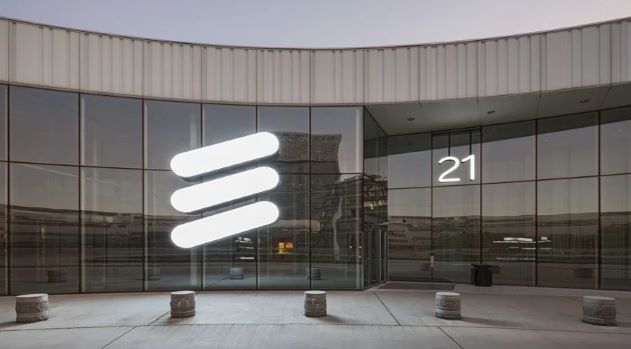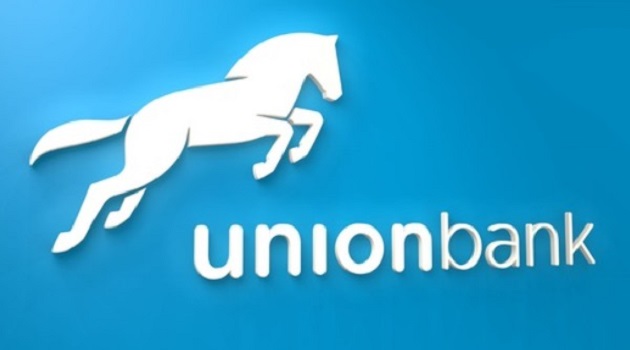Telecom
Ericsson Named Leader in 2023 Gartner Magic Quadrant for 5G Network Infrastructure for CSPs Report

Published in February 2023, Ericsson is recognized in the Leaders’ quadrant and positioned highest for Ability to Execute. Vendors offering 5G solutions for communications service providers (CSPs) were comprehensively and independently assessed and evaluated by Gartner experts on their Completeness of Vision and Ability to Execute, to provide a market snapshot on 5G infrastructure abilities.

Around 50 percent of 5G traffic outside of China runs on Ericsson networks. R&D investments over the past four years have led to Ericsson increasing its market share outside of China to 39 percent in 2022, from around 33 percent in 2017.
There are currently 235 live 5G networks in commercial service, and Ericsson is powering 143 live 5G networks. In addition, Ericsson has been driving the cloud-native and dual-mode technology introduction for core networks.
Fredrik Jejdling, Executive Vice President and Head of Networks, Ericsson, says: “Being recognized once more as a Leader by Gartner feels truly rewarding. We believe it shows that investing in technology for performance and cost leadership continues to pay off and make an impact.”
Ericsson’s commercial 5G leadership and technology evolution leadership is independently known industry-wide. Ericsson has been recognized in Gartner 5G Magic Quadrant 2022, and Frost Radar Global 5G Infrastructure 2021. The company also ranked highest among telecom vendors in the latest ABI Research sustainability assessment.
Ericsson continuously evolves its end-to-end 5G offerings, which include 5G RAN with the energy-efficient Ericsson Radio System, Cloud RAN, Ericsson Silicon, 5G Core, Orchestration, and 5G Transport as well as professional services.
The company has launched innovative software solutions such as Ericsson Spectrum Sharing, 5G Carrier Aggregation and Uplink Booster, which significantly improve coverage, user throughput and spectral efficiency.
At a pre-MWC 2023 briefing event on February 9, the company unveiled further enhancements to its 5G indoor, macro and mobile transport portfolios: more than 10 new macro and transport solutions that reduce energy consumption and carbon emissions while boosting network capacity; and three additions to the Ericsson Radio Dot System that boost 5G coverage, capacity, and capabilities across any indoor environment.
Telecom
MTN Nigeria Unveils 21 Days of Y’elloCare to Empower Communities through Digital Tools

MTN Nigeria today held the opening ceremony for the 2025 edition of 21Days of Y’ello Care, the company’s annual employee volunteerism initiative.

This year’s campaign, themed “Connecting at the Roots – Connecting Communities through Digital Tools,” will run from June 1 to June 21, 2025, and focuses on supporting communities that continue to face barriers to digital access and connectivity.
MTN Nigeria kicked off on Sunday June 1 with trainings across different locations in Lagos where staff of the company volunteered to delivered training in valuable areas such as digital marketing and personal branding and employability skills.
In line with the Group-wide campaign theme, MTN Nigeria is implementing a series of grassroots initiatives aimed at expanding digital inclusion and connectivity in underserved areas.
Planned activities include equipping schools and community youth centres with devices, digital literacy workshops, deployment of community Wi-Fi access points, support for digital entrepreneurship and the establishment of an all-in-one Y’ello Pods across the country that will provide a digital hub for learning and support financial inclusion.
Speaking at the opening ceremony held in Lagos, Karl Toriola, Chief Executive Officer, MTN Nigeria said, Y’ello Care matters to us because we’re a digital company and we’re operating in an environment where there are so many needs. At MTN Nigeria, we care, and we want to show our direct connection and responsibility to the communities we operate in.
Now in its 18th year, Y’ello Care is a groupwide flagship MTN employee volunteering initiative that encourages MTNers to volunteer their time and expertise to support positive social change.
The campaign reflects MTN’s purpose to enable the benefits of a modern connected life for everyone and is anchored in the company’s core values.
In 2024, in a remarkable demonstration of corporate volunteerism, MTN staff, through the Y’ello Care initiative, reconstructed a school block at Iwerekun Community High School, Lakowe. This effort has restored hope and significantly improved learning conditions for both students and teachers.
For further information, updates on “21 Days of Y’ello Care”and MTN Nigeria’s commitment to social development, please visit yellocare.ng or follow us on social media.
Telecom
Google’s Open Buildings Data Empowers Africa’s Health and Climate Progress

Fresh, on-the-ground evidence from health planners and climate analysts in Rwanda, Nigeria and South Africa shows how the Open Buildings dataset, which maps more than 1.8 billion structures, is helping frontline projects close service gaps and strengthen community resilience.

Across the continent, artificial-intelligence tools are graduating from pilots to public-service workhorses, powering everything from crop-price forecasts to live language translation. Open Buildings—developed by researchers at Google Research Africa—is part of that shift, proving that open, locally guided AI can turn sparse data into timely decisions without locking African problem-solvers behind paywalls or proprietary gates.
In Rwanda, the Ministry of Health and Kigali-based Sand Technologies resited rural clinics with help from the dataset. Their new blueprint aims to bring 92% of citizens within a 30-minute reach of care, trimming journeys that put mothers and newborns at risk.
Across Northern Nigeria, epidemiologists at AFENET and geographers from WorldPop uncovered 10,250 buildings, guiding vaccinators who reached 70% of the zero-dose and under-immunized children identified through the mapping in just six months.
Meanwhile, the World Resources Institute (WRI) has already applied this flood-risk modelling in Dire Dawa, Kigali, Musanze, Gqeberha and Johannesburg, combining two-dimensional hydraulic simulations with building footprints to create block-by-block exposure maps.
The need is pressing: Nairobi is still recovering from the May 2024 floods that displaced more than 278 000 residents, while Johannesburg’s rapid growth along the flood-prone Jukskei River continues to heighten vulnerability
These projects tackle challenges felt across the continent. Africa still has about 8.7 million “zero-dose” children who receive no routine vaccines each year, while the urban population is projected to almost double to nearly one billion people by 2035— forcing new homes into high-risk floodplains and informal settlements.
By giving ministries, city engineers and NGOs a street-level view of where communities are growing and how they change over time, the Open Buildings dataset lets limited budgets flow to the people and places that need them most.
Dr Aisha Walcott-Bryant, Research Scientist & Head, Google Research Africa, “These projects show what happens when local expertise meets open, scalable technology: mothers reach clinics sooner, children receive long-overdue vaccines, and city planners get ahead of the next flood.
“We’re thrilled to stand beside partners who turn data into decisive action, proving that AI’s highest calling is to solve real-world challenges.”
From lifesaving clinics to climate-smart cities, these projects show how open AI is fast becoming Africa’s quiet engine for equitable progress.
The Open Buildings dataset—along with sample code, tutorials and its new 2.5D layer—is freely available at g.co/openbuildings.
Telecom
Union Bank and PAPSS Revolutionize Cross-Border Payments

To deliver simpler, smarter banking solutions, Union Bank of Nigeria has partnered with the Pan-African Payment and Settlement System (PAPSS) network, a Financial Market Infrastructure that provides hassle-free and convenient cross-border money transfers to some selected African countries.

This revolutionary payment solution for implementing the African Continental Free Trade Agreement (AfCFTA) is designed to transform how payments are made across Africa.
With PAPSS, customers can send money instantly to Ghana, Kenya, Rwanda, Liberia, Sierra Leone, Gambia, Malawi, Zambia, Zimbabwe, Djibouti, Nigeria and more African countries in the future.
Using PAPPS offers numerous benefits to customers, including, but not limited to, instant payments or transfers, cheaper foreign transaction costs, no need to source FX, enhanced security, and intra-African trade opportunities.
Commenting on this partnership that goes across borders, Peter Amadi, Head of Transaction Banking at Union Bank of Nigeria, said,
” At Union Bank of Nigeria, we are committed to driving innovation and excellence in banking. Our focus is on providing seamless and efficient banking through simpler, smarter solutions that meet the evolving needs of our customers.
“We believe in fostering strong relationships and delivering exceptional value to our customers, ensuring their success in today’s dynamic financial landscape.”
Mike Ogbalu III, CEO of PAPSS, commenting on this partnership, said, “I am very excited and proud to see Union Bank of Nigeria, a bank with over a century of banking legacy, joining the PAPSS network.
“This shows how PAPSS will be a game changer for the continent by enabling infrastructure to spur the growth of intra-African trade and commerce, with the active participation of regional economic communities, private sectors, and other stakeholders.”
Union Bank’s partnership with PAPSS marks a significant milestone in the Bank’s commitment to driving innovation and excellence in banking.
By providing seamless and efficient banking solutions through simpler, smarter means, the Bank aims to meet the evolving needs of its customers.
This collaboration enhances the Bank’s service offerings, fosters strong relationships, and delivers exceptional value to customers, ensuring their success in today’s dynamic financial landscape.

 E-Business2 days ago
E-Business2 days agoFarmers to Get Identity Card for Loans, Inputs

 Telecom2 days ago
Telecom2 days agoARCON Probes 9mobile over Alleged N1Bn Advertising Debt

 News2 days ago
News2 days agoSERAP Sues NNPC over Alleged Missing ₦500Bn, Seeks Accountability

 News2 days ago
News2 days agoFirst Asset Management Receives 2024 Fund Manager Award

 E-Business2 days ago
E-Business2 days agoDyna.Ai Launches Operations in Nigeria

 News1 day ago
News1 day agoJAMB Waxes Worriedly over Rising Digital Exam Fraud

 General News2 days ago
General News2 days agoNigeria Relaunches National Talent Export Programme to Unlock $1 Trillion Global Outsourcing Market

 Telecom2 days ago
Telecom2 days agoNiRA Holds 17th AGM, Elects New Leadership to Propel .ng Domain Growth




























